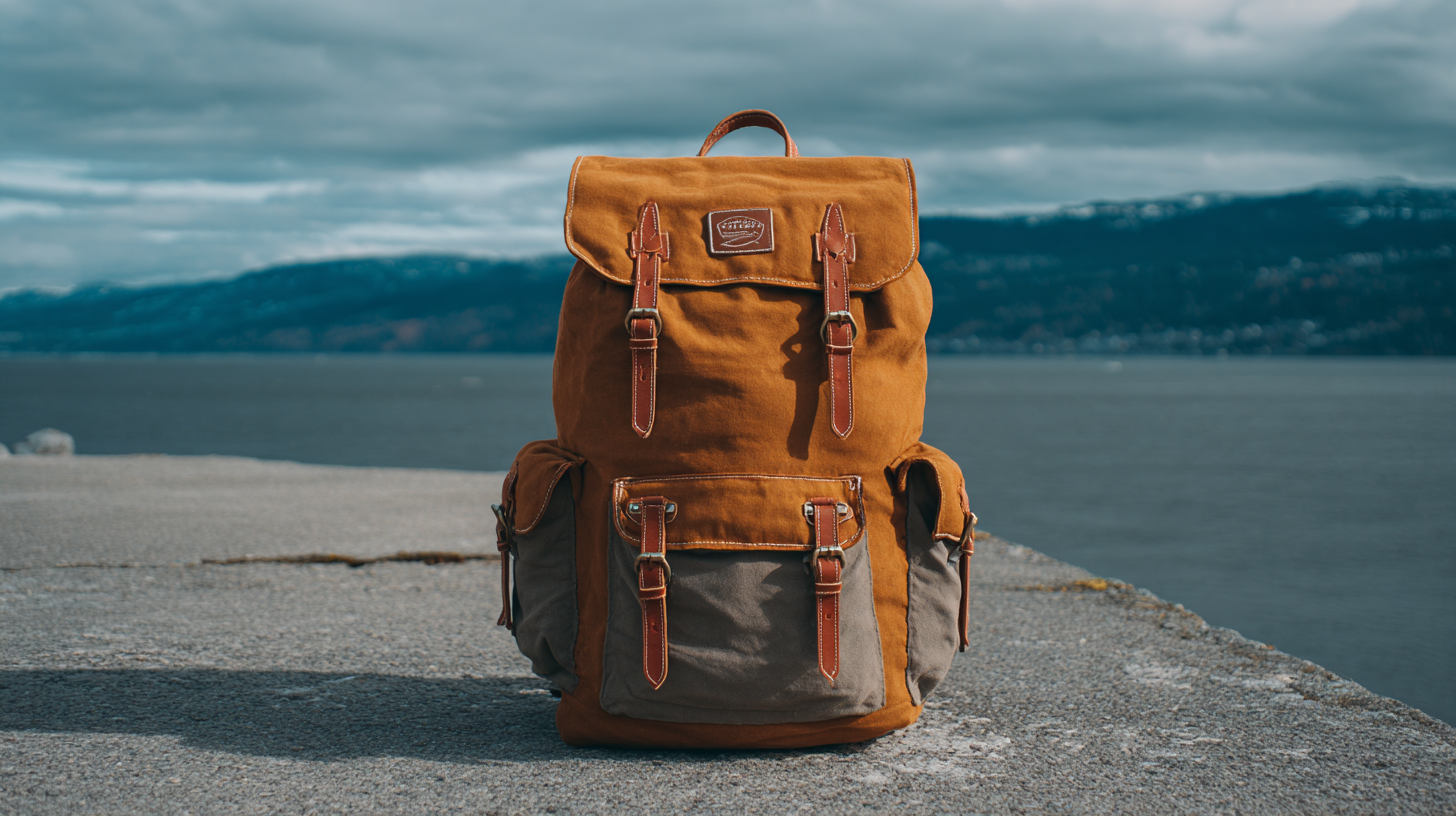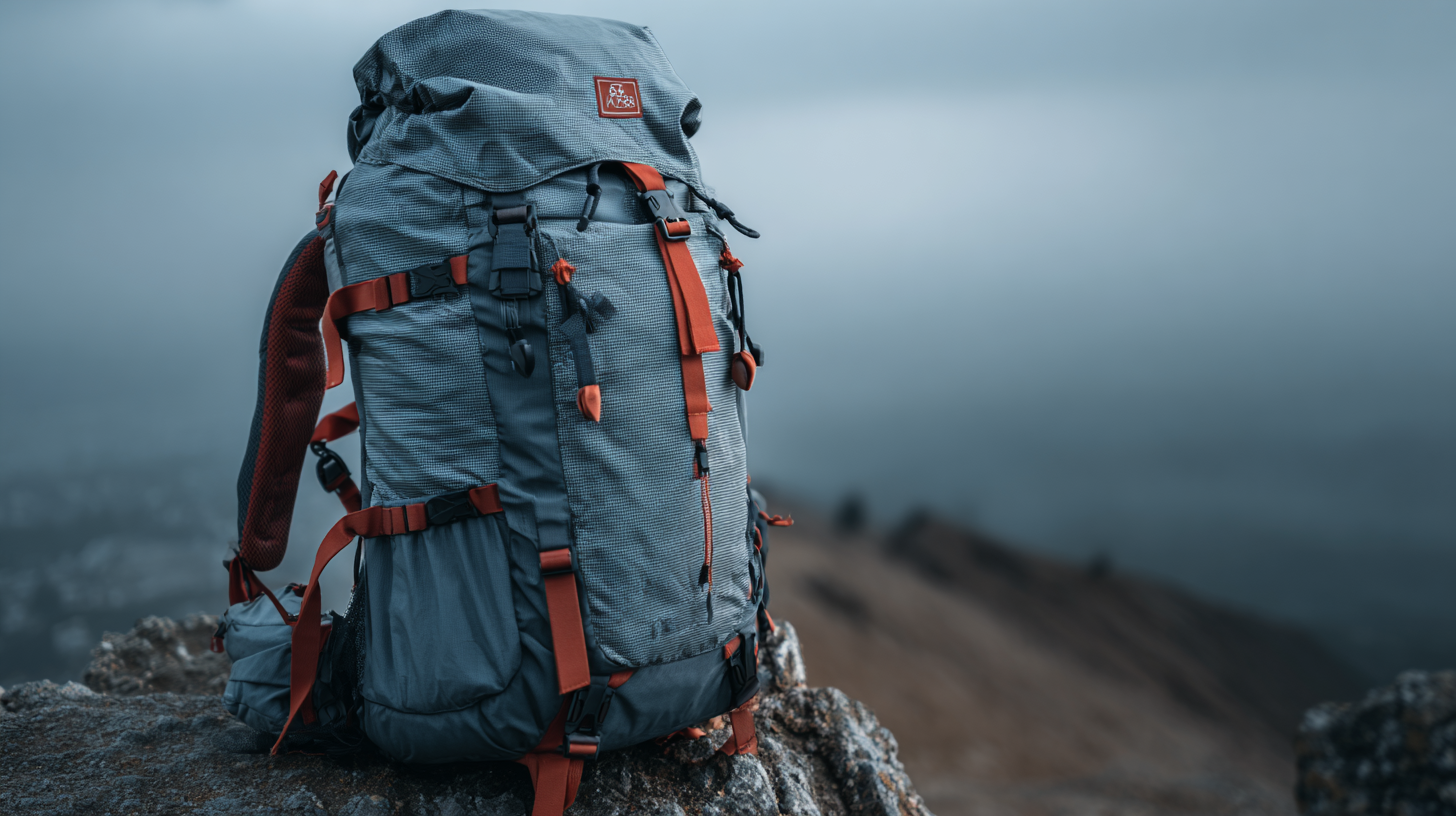Leave Your Message
-
E-mail
-
Whatsapp
In an era where travel has become more accessible than ever, choosing the right travel back pack is essential for adventurers seeking to optimize their journeys. According to a recent report by the Adventure Travel Trade Association, the adventure travel market is projected to reach $1,626 billion by 2026, reflecting an increasing interest in experiential travel. As wanderlust continues to soar, travelers are prioritizing convenience, durability, and functionality in their gear. The importance of a well-designed travel back pack cannot be understated; it serves as the backbone of any successful trip, ensuring that essentials are both organized and easily accessible. With technology advancing at an unprecedented pace, modern travel back packs now boast innovative features that cater to the evolving needs of globetrotters. In this guide, we will explore how to select the best travel back pack that aligns perfectly with your adventures, making every journey not just enjoyable, but truly remarkable.

When selecting the perfect travel backpack, it's essential to identify common issues that can arise during various activities. One prevalent concern is the discomfort caused by inadequate support. Whether you plan to hike rugged trails or navigate bustling city streets, a poorly designed backpack can lead to back pain and fatigue. Many travelers overlook the importance of an ergonomic design, which should include padded shoulder straps and a supportive frame to ensure your pack sits comfortably on your back.
Another significant issue arises from insufficient space and organization. Travelers often underestimate how much gear they'll need for specific activities, leading to overpacking or underpacking. Backpacks with a lack of compartments or pockets can make it challenging to find essentials like water bottles, snacks, or electronics when you need them most. Additionally, the lack of water resistance can pose problems during unexpected weather changes, potentially damaging your belongings. By taking these common issues into account and selecting a backpack that addresses them, you can enhance your travel experience and enjoy your adventures to the fullest.
When selecting a travel backpack, comfort should be a paramount consideration. Poorly designed backpacks can lead to discomfort and even chronic pain, particularly in the shoulders and lower back. According to the American Chiropractic Association, around 80% of adults experience back pain at some point in their lives, often exacerbated by improperly fitted backpacks. A well-structured pack can redistribute weight effectively, allowing travelers to enjoy their adventures without the burden of pain.
Tips for ensuring comfort include choosing a backpack with adjustable straps and a padded back panel. Look for models that offer ergonomic design features, as these can significantly reduce stress on the body during long hikes or travels. Industry studies indicate that backpacks with a hip belt can help transfer weight from the shoulders to the hips, making it easier to carry heavy loads for extended periods.
Additionally, consider the backpack's size and fit. A backpack that is too large or too small can lead to muscle strain. Aim for a pack that is proportional to your torso length and offers sufficient adjustments for a customized fit. Research shows that a properly fitted backpack can improve posture and reduce fatigue, ultimately enhancing your overall travel experience.

When selecting a travel backpack, material quality should be a top consideration as it directly influences durability and performance. High-quality materials such as nylon or polyester resist wear and tear, ensuring your backpack can endure the rigors of your adventures. Waterproof coatings can also significantly extend your backpack's life by protecting your gear from unexpected weather conditions. Choose a backpack that uses robust materials for critical areas like the bottom and straps to minimize damage from heavy loads and rough handling.

Tips: Always check the denier of the fabric; fabrics with higher denier count are generally sturdier. Additionally, look for reinforced stitching in high-stress areas to prevent fraying and tearing.
Another important aspect to consider is the weight of the backpack. Lightweight materials can make a significant difference during long treks. However, be wary of materials that sacrifice durability for lightness. It's essential to strike a balance—opt for a lightweight yet high-strength material that ensures comfort without compromising resilience.
Tips: Utilize customer reviews to gauge real-world durability and performance. Also, consider backpacks with a lifetime warranty as a signal of the manufacturer’s confidence in material quality.
When it comes to travel, packing efficiently can make or break your adventure. Research shows that 60% of travelers admit to overpacking, often due to anxiety about forgetting essentials or being unprepared for various situations. On the flip side, 30% struggle with underpacking, leading to purchases of unnecessary items at inflated prices. Your trip destination, past travel experiences, and even the type of luggage you choose can significantly influence your packing habits.
To strike the right balance, consider these tips: First, create a packing list based on your itinerary and eliminate any duplicates or rarely used items. Second, invest in versatile clothing that can be mixed and matched, allowing you to minimize your load while maximizing outfit options. Lastly, practice packing a few days before departure to identify what you can live without and to ensure that your travel backpack meets your needs without the burden of excess weight.
Understanding the psychology behind packing can help mitigate the problems of overpacking and underpacking. By being mindful of your tendencies and tailoring your packing strategy accordingly, you can enhance your travel experience while maintaining comfort and convenience.
When embarking on your next adventure, the fit of your backpack can make all the difference. An ill-fitting backpack can lead to discomfort, fatigue, and even injuries, ultimately ruining your experience. It is crucial to prioritize adjustability, ensuring that the pack conforms to your body shape and size. Take the time to properly adjust shoulder straps, hip belts, and load lifters. Remember, your backpack should feel like an extension of yourself, not a hindrance.
**Tips:** Before you hit the trails, try on the backpack with weight inside it, mimicking what you will carry. Walk around for a few minutes to assess the comfort level. If you notice any pressure points or discomfort, don’t hesitate to make adjustments or explore other options. Additionally, consider the type of activities you will engage in; different adventures may require different types of fit. Always remember, a well-fitted pack can enhance both comfort and efficiency, allowing you to fully enjoy your journey.
When choosing a travel backpack, look for models that provide multiple adjustment points. A good fit should distribute weight evenly across your body. Harness systems that allow for height adjustments can be particularly valuable for diverse body types. Investing time in finding the right fit will allow you to focus on what truly matters—enjoying your adventure without the interference of an uncomfortable backpack.
